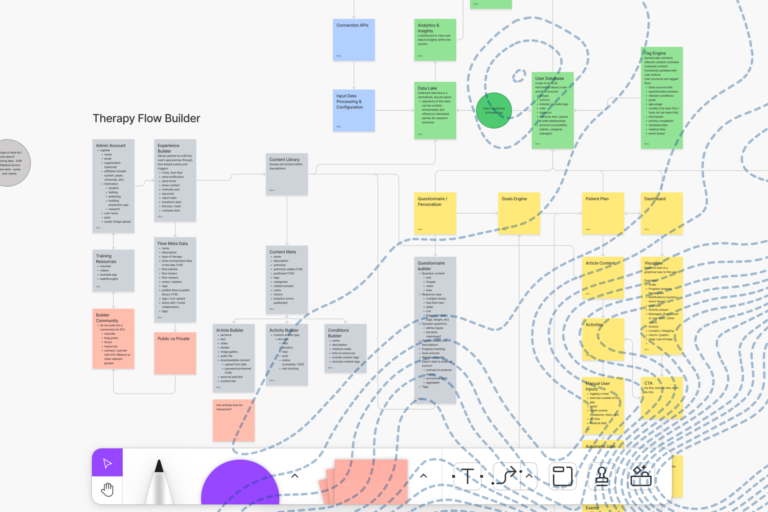Healthcare presents one of the most fascinating contradictions in modern history: how can a field that presents some of the most stunning, leading-edge innovations simultaneously lag so far behind the technology curve as a whole?
On the one hand, we’ve created some of the most impressive technological advances, from wearables for daily health to groundbreaking artificial organs. On the other hand, we’re demonstrably behind other industries – including heavily regulated counterparts like banking and insurance – in digital maturity and customer engagement technology.
By all accounts, healthcare should be at the bleeding edge of innovation. We have a hungry market – an aging Boomer population that’s prioritizing personal health outcomes, as well as younger generations actively looking to support organizations with people-first, socially responsible values. We have a passionate workforce, driven by a desire to make a difference in the everyday lives of patients. With the world’s health in our hands, we are perfectly poised to create powerful, life-changing products and services.
Bureaucracy is the Antithesis of Innovation
But this same grand potential that makes our industry ripe for innovation can also set us up for failure. By its very nature – and for good reason – the healthcare industry is notoriously risk-averse. So while we may feel the warm glow of personal purpose when we talk about the people we’ll help and the impact we’ll have, many of us also can’t escape the little voice that says, “but can we really make it happen?”
This elephant in the room has taken on Jurassic proportions. Instead of seizing the opportunity to forge the way, healthcare as a whole lags behind. We’re not the nimble cheetah racing and leaping our way into the future. We’re the lumbering Brontosaurus, dragging half of our bulk along with us as we slowly push our way forward. Sadly, because we’re so big and the challenge of shifting momentum is so arduous and time-consuming, we tend to squash new thinking as an obstacle in our path, rather than foster it as a crucial catalyst in our evolution.
Bureaucracy is the antithesis of innovation, and our heavily regulated, compliance-oriented, risk averse industry has created a massive quagmire of red tape. Paradoxically, we’ve reached a point in healthcare where so much is broken that innovation is desperately needed to fix it. But in the face of such a mammoth feat, where do you begin?
Can Behavioral Economics Break the Red Tape?
Transforming the hulking dinosaur into an agile beast isn’t a simple request. There are too many major forces at play, from stakeholders, to funding, to public policy, to patients themselves.
At Arcweb, we recently discussed how human architecture is a core innovation challenge and how few groups tasked with healthcare innovation have the resources needed to succeed. We also know that getting those resources starts with getting executive buy in – a monumental task in itself. As an innovation leader, how do you bring together dozens of different stakeholders, many with conflicting or even directly opposed missions and goals, and earn their support?
Psychology and behavioral economics could hold the key.
As David Asch, MD, executive director of Penn Medicine’s Center for Health Care Innovation, succinctly explained in a recent interview, “the key promise of behavioral economics is that we’re irrational in highly predictable ways.” Most of us already use consumer behavioral economics in our product design; why not extend it to our executive approach as well?
Three human biases that hold back innovation
We already know we need to approach the C-suite armed with technology-based proposals, robust business plans, complex financial projections, detailed risk assessments, and patient impact analyses. But to ensure real engagement – and, more importantly, support – from our stakeholder audience, we must also recognize that there are a number of human biases at play.
Here are three specific ones to watch out for.
Hyperbolic discounting: People will choose a smaller immediate reward over a larger delayed reward. It’s incredibly rare to get support for any project without meaningful short-term financial or clinical impact. Highlighting leading success indicators can not only encourage leaders to give the green light, it can also create the right framework for longer-term patience after the project launches.
Prospect theory: People adapt to what they have experienced and weight probabilities subjectively and nonlinearly. For stakeholders, this means that avoiding a loss usually outweighs the prospect of an equal or greater gain. Mitigating downside risks through options like graduated rollouts can give a wary executive the added confidence they need to approve a calculated risk.
Equilibrium and predictive value: People reinforce strategies that performed well, or would have performed well if they had been chosen. Showcasing examples of the success of similar technology in other settings can ease the fear of the unknown and can help cautious leaders feel less like they’re going out on a limb and more like they’re keeping pace with the rest of the world.
Sign up for HealthWire to get the latest health tech headlines delivered to your inbox
As innovators continue to work with increasingly reluctant executive stakeholders, it’s important to be prepared to address the cognitive roadblocks that can influence their decisions and undermine great ideas. It’s not about presenting a distorted or dishonest proposal; it’s about understanding and addressing the fundamental elements of human nature that lie at the heart of making the decisions that can ultimately create impactful change.



